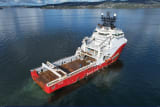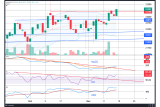
India’s iron-ore import landscape is undergoing a quiet but significant shift. Over the first ten months of the year, imports rose by about 9.5% to 31.6 Mt, according to vessel-tracking data. Our forecasts indicate that by 2026 the country could be importing as much as 50 Mt, potentially becoming a net iron-ore importer. This rapid rise is not simply a matter of higher demand; it reflects a deeper strategic transition.
At the center of this surge is JSW Steel, which accounts for an outsized share of India’s import volumes. Last year, the company was responsible for a majority of all iron-ore brought into the country, according to Reuters. The driver is straightforward: as JSW expands its electric arc furnace (EAF) capacity and continues supplying customers in Western markets, it needs high-grade ore to reduce emissions. The company is adding 1.5–2 Mtpa at its Vijayanagar plant and another 5 Mtpa at Dolvi, according to Moody’s. However, much of India’s domestic ore is low-grade and costly to upgrade, prompting JSW to increasingly source premium ore from overseas. It blends these higher-quality imports, previously from Australia and Oman, with domestic feedstock to achieve a bespoke grade suited to its process. This build-out, combined with falling global ore prices, has made imported ore even more attractive.
This changing import profile has opened the door for Vale, the Brazilian mining major. While Vale has long supplied custom-blended ore to China, it is now directing more high-quality shipments toward India. Vessel-tracking data suggests that from January to October, 92% of the growth in India’s iron-ore imports (+6.0 Mt to 11.0 Mt in Jan-Oct) originated from Vale’s shipments out of Brazil and Oman.
Several structural factors are behind this reorientation. First, the quality of Australian ore is declining, making Vale’s premium Brazilian material more competitive. Second, Vale has adjusted its product mix: with pellet premiums shrinking, it is exporting more iron-ore fines, which are less value-added but easier to place in multiple markets. This shift has freed up some volumes (which would have been used for pellet feedstock), which Vale appears to have sold into the spot market. Industry sources suggest contractual structures and pricing dynamics may also play a role, with the fines potentially offered in addition to pellet contracts, creating mutual benefit for Vale and JSW.
India’s port infrastructure further supports this trend. JSW can receive Vale’s cargoes at its deep-draft ports, Jaigarh (17.5 m) and Krishnapatnam (18.5 m), where Capesize vessels can berth comfortably and optimise economies of scale. Mirroring its China strategy, Vale appears to be marketing dual stems from Tubarão and PDM to both ports, reducing per-tonne freight costs and allowing JSW to secure the precise ore grade it needs at competitive pricing.
This strategic realignment carries broader implications. As Vale gradually diversifies away from a slowing China, India is emerging as a long-term growth market. Vale’s CEO has noted that India’s steel capacity could potentially double to around 300 Mtpa in the coming years, presenting a substantial opportunity. At the same time, India’s domestic pellet output is rising; production reached 105 Mt in FY 2024-25, up 5%, strengthening the downstream value chain and consequently complementing Vale’s shift toward fines exports.
From a shipping standpoint, two tonne-mile scenarios emerge. If Vale’s Brazilian fines are incremental, i.e., supplementing rather than replacing existing shipments from Oman, the trade would generate strong positive tonne-miles and meaningfully benefit bulk carriers. If, however, the fines merely substitute for pellet cargoes, the tonne-mile effect will be more modest, limited primarily to improved vessel utilisation due to the different handling and stowage characteristics of fines versus pellets.
By Vriddhi Khattar, Dry Bulk Analyst, Research, SSY
Articles
You may also be
interested in
View allGet in touch
Contact us today to find out how our expert team can support your business














